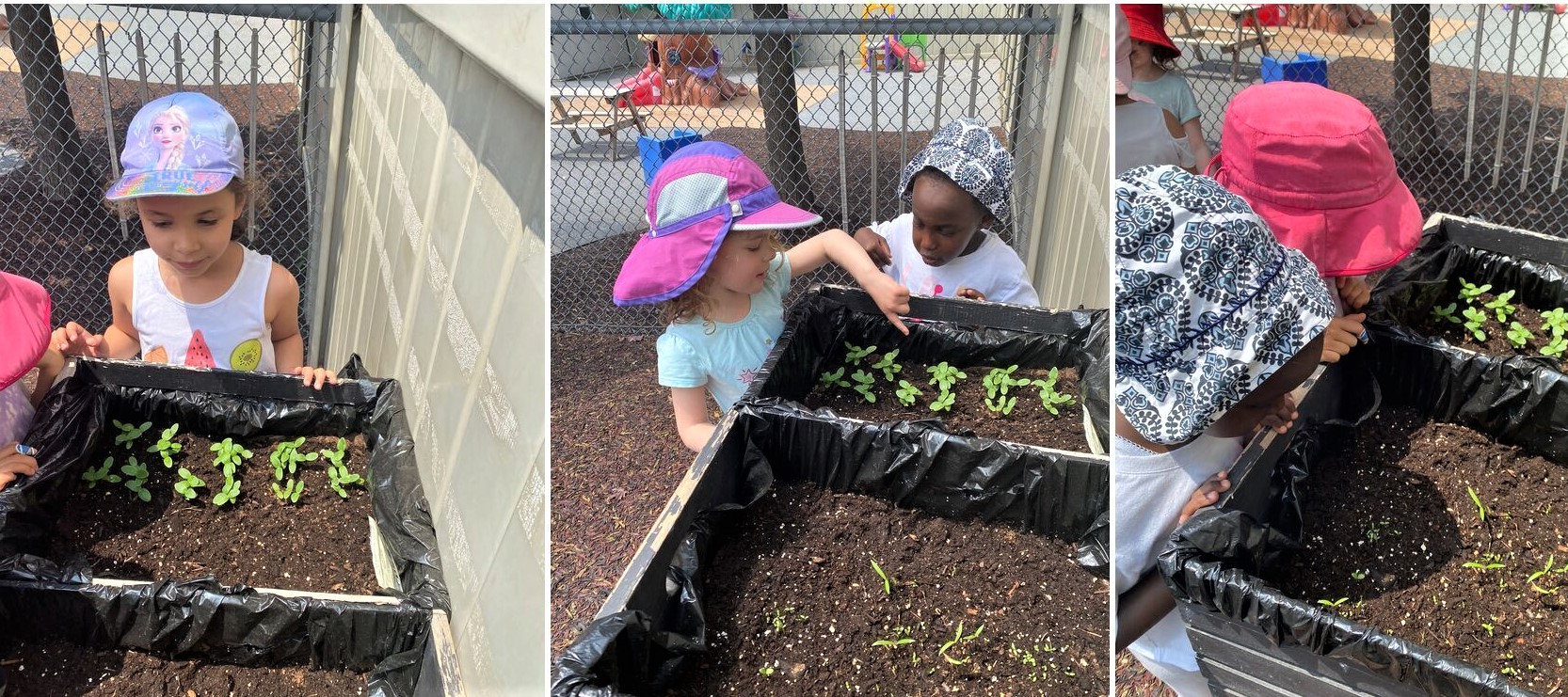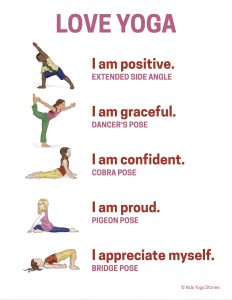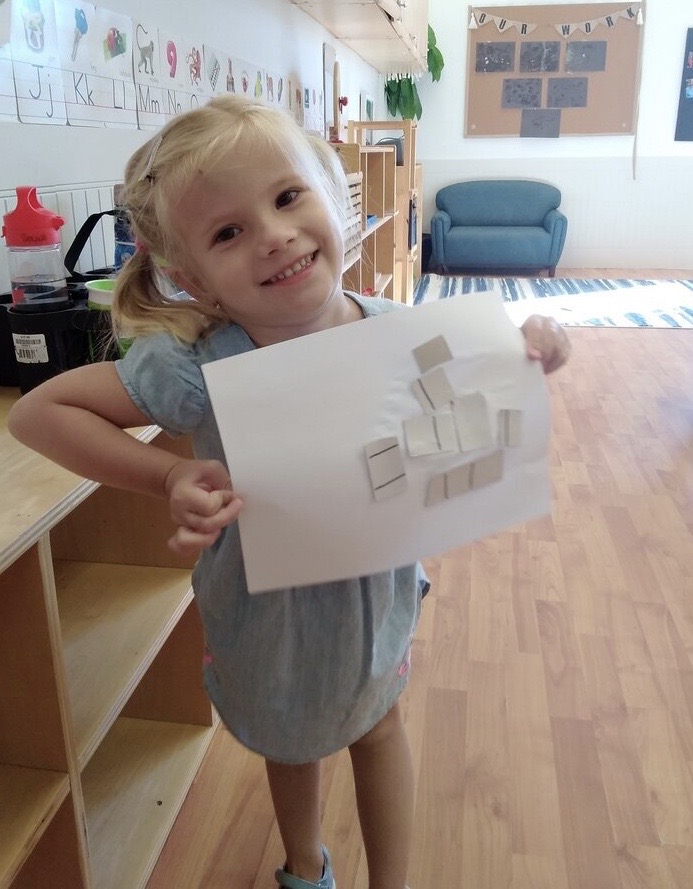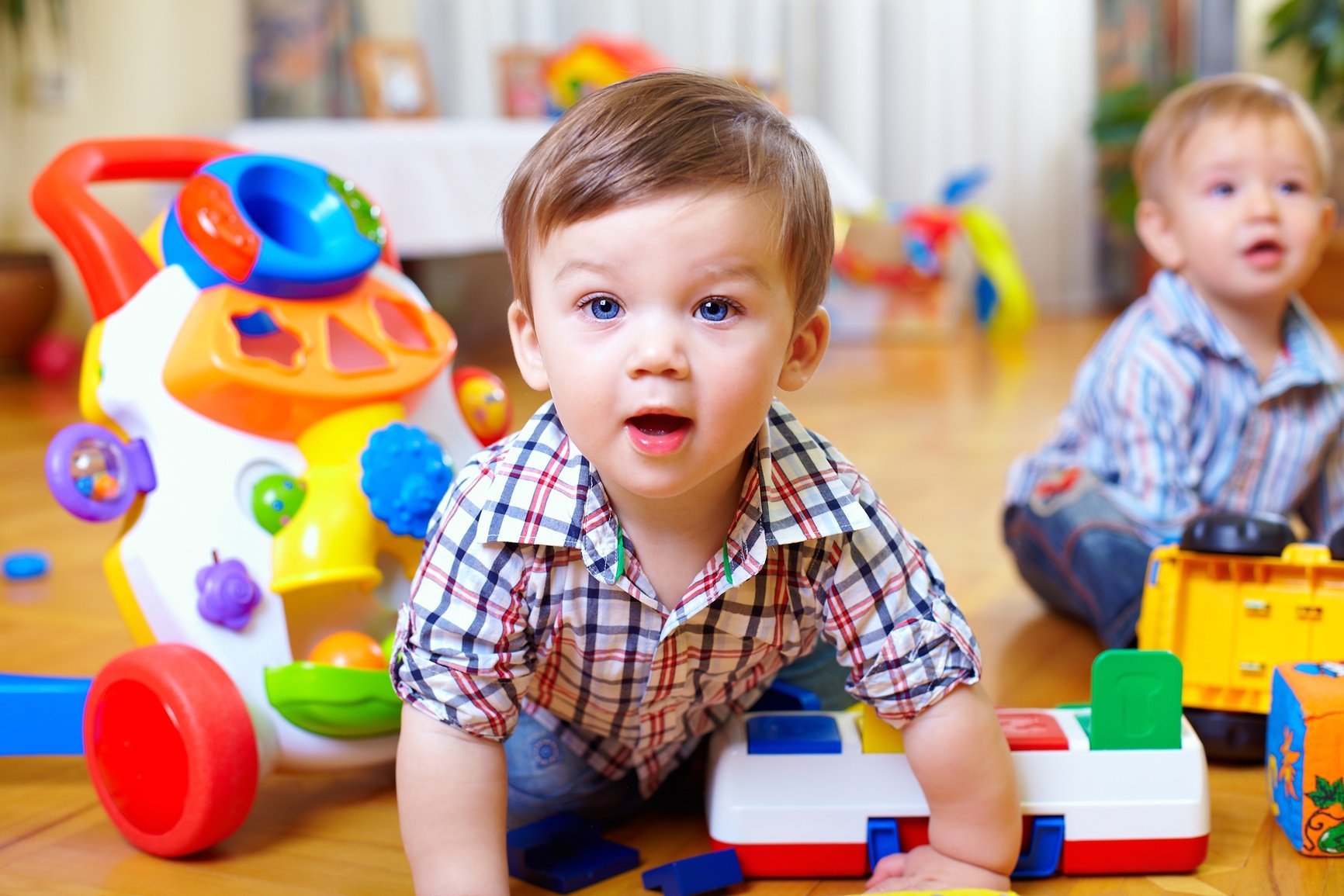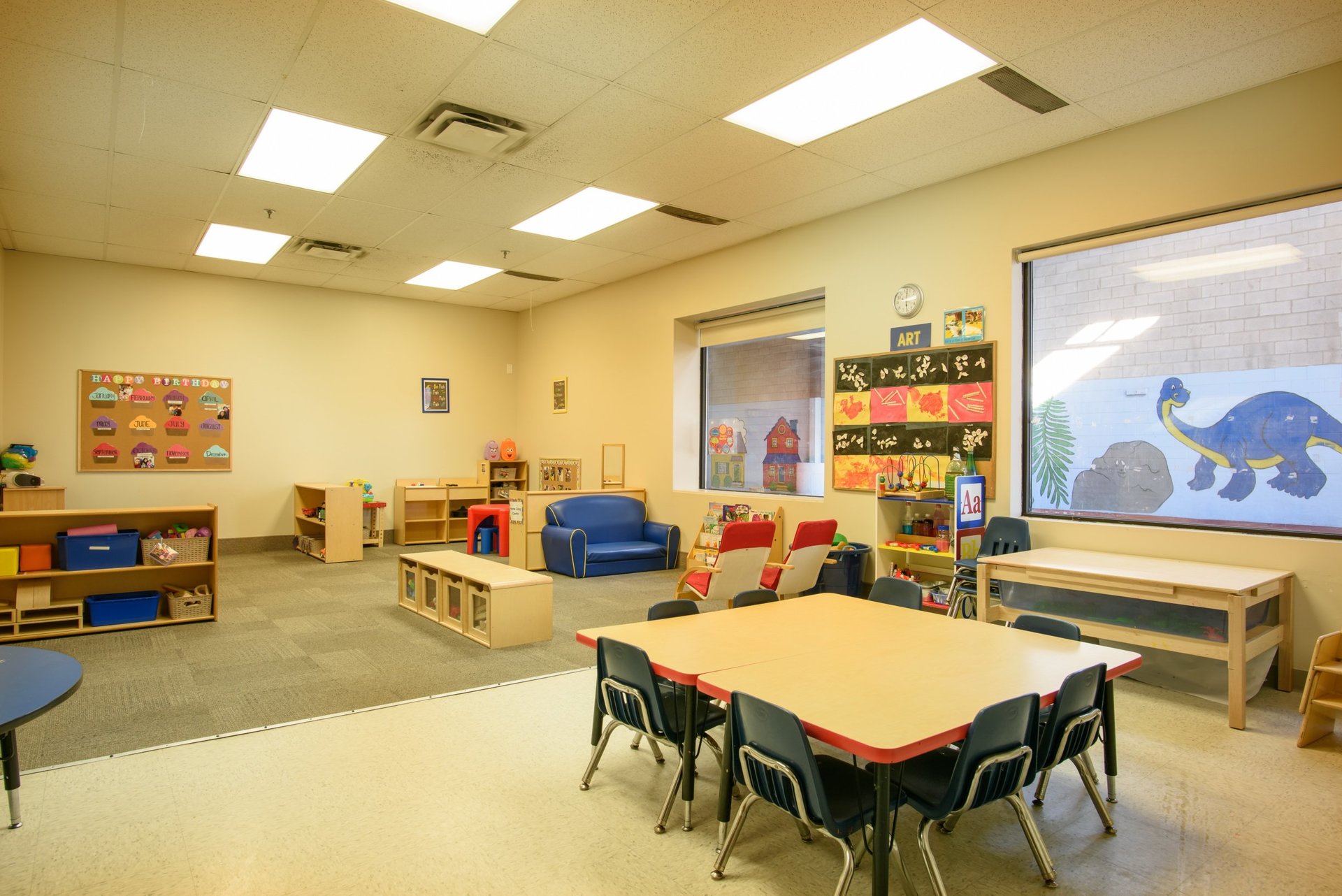Gardening With Kids: 7 Lessons They Learn
Gardening With Kids: 7 Lessons They Learn
At Alpha’s Discovery Kids, encouraging growth and development is what we do best. Our students have become very involved in tending to classroom plants. We have made it a seasonal tradition to create an outdoor garden with our preschoolers. They love digging and planting at the beginning of the season, watching the growth and then picking the vegetables during the middle of the season. All the knowledge they gain throughout the process will stay with them for years to come. The learnings will shape them as they grow into adults who will one day be responsible for their own little place in the world. When children help in the garden, they begin to understand what it takes to grow. They begin to understand that plants need water and food just like they do.
7 Lessons children learn from gardening
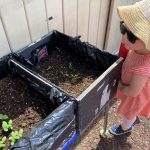 Engages all the senses–Gardening can be a complete sensory experience for kids. Growing plants isn’t about just digging in dirt, although that’s a great way to experience using the touch sense, but kids can use all their other senses while learning how to grow their own food. Sight, taste and smell comes into play when they get to experience the aromas and tastes of what they have harvested.
Engages all the senses–Gardening can be a complete sensory experience for kids. Growing plants isn’t about just digging in dirt, although that’s a great way to experience using the touch sense, but kids can use all their other senses while learning how to grow their own food. Sight, taste and smell comes into play when they get to experience the aromas and tastes of what they have harvested.
Encourages healthy eating–Learning to grow your own food encourages you to eat it. As you and your family eat more and more fruits and vegetables as your garden produces, they may be experiencing new foods for the first time and discovering new favorite foods too.
Life cycles-Big lessons can be learned in the garden about life and the lifecycle of plants, bugs and animals. From new baby rabbits (that you want to keep out) to mature bees carrying honey back to the hive and to the life of the plants themselves, they can literally watch life happen in the garden.
Bugs are useful-Gardening shows kids how useful bugs are in the world. They begin to understand that even earthworms have a place in the circle of life. Learning these things can help make bugs seem less scary.
Nurturing & Responsibility-These two are technically different skills but they really go hand-in-hand. Helping plants grow teaches kids how to nurture a little life and it teaches them responsibility since they will have to help water and feed the plants. Remembering to do this and helping adults keep an eye on the plants is a big responsibility for children. They love to watch as their hard work pays off and the garden vegetables grow.
Family bonding– Gardening is a family experience. Everyone can gets involved on some level. It’s fun for us to do it together and experience growing food or plants. Not only is it fun but it gives us a chance to teach kids so much and that’s fulfilling for us and them.
Gardening is good for the soul-Gardening gives us a chance to pause and get back to nature. Nature has a way of calming us. No screens are involved so that’s a big bonus. It’s a time out from the rest of life when they just get to concentrate on the dirt between their fingers.
Halloween Safety Tips 2021
Halloween Safety Tips
Halloween can be scary in more ways than just scary costumes and music. There are many safety risks to consider before heading out on Oct 31st– Here are a few safety tips to keep in mind on Halloween night to keep your little ones safe.
#1 2021 SAFETY RULE is to be sure to follow all public health safety guidelines
To let others know you are following safe Halloween practices during the pandemic you can display a red pumpkin on your costume or at your door. Click here to read more about the red pumpkin campaign
#2 Trick or treating with Toddlers and children under 5
Most toddlers have no idea what is going on and some dislike wearing a costume. As parents, we enjoy watching them dress up in their cute costumes and experiencing some of the excitement that Halloween offers. The best advice is baby steps for toddlers and children under 5 years and follow these tips:
- Head out early when its still light enough for them to see others and to be seen.
- Check out local day time events and avoid the spook.
- Go to homes you know and can guarantee there will not be any scary surprises.
- Your little one will likely enjoy handing out candy just as much as trick or treating.
- Don’t’ forget to remind them to use their manners – PLEASE & THANK YOU.
#3 Costume Safety
- All costumes, wigs and accessories should be fire-resistant.
- If children are allowed out after dark, fasten reflective tape to their costumes and bags, or give them glow sticks or flashlights.
- Avoid masks for younger children. It’s better to use face paint to create the effect and allows them to see better.
#4 Safe Treats
- Don’t eat candy until it has been inspected at home.
- Eat a snack before heading out to avoid the temptation of nibbling on a treat before it has been inspected.
- In case of a food allergy, check the label to ensure the allergen isn’t present. Tell children not to accept—or eat—anything that isn’t commercially wrapped.
- Parents of very young children should remove any choking hazards such as gum, peanuts, hard candies, or small toys from the Halloween bags.
- Inspect commercially wrapped treats for signs of tampering, such as an unusual appearance or discoloration, tiny pinholes, or tears in wrappers. Throw away anything that looks suspicious.
# 5 When They’re on the Prowl
Here’s a scary statistic to keep in mind: Children are more then twice as likely to be hit by a car and killed on Halloween than on any other day of the year. Lack of visibility because of low lighting at night also plays a factor in these incidents.
- A responsible adult should accompany young children on the neighborhood rounds.
- Children and adults are reminded to put electronic devices down and keep heads up and walk.
- Practice safety rules at home and set clear distance boundaries. Role play and make sure children know the dangers because the excitement of the night and a little sugar can turn a fun night into a scary one if you are not careful.
- Have Fun!
Click here for some fun Halloween Activities to do with your child – even if you decide to stay in for the night!
Heart-centred yoga for kids
Heart-centred yoga for kids
Valentine’s Day is almost here. It’s a great time to stop and think about what love means to each of us. When we ask the children what they love they often tell us “Mommy & Daddy ” and sometimes “cookies”. Another great way to honor Valentine’s Day is by opening our hearts through creative movement.
Although at this time of year, we often focus on loving others, self-love is also important. In fact, it’s often said that you can’t love anyone else until
you love yourself first. Self-love starts with taking care of our bodies, minds and spirits and being healthy.
At Alpha’s Discovery Kids, we are packing our student’s toolboxes with mindful awareness skills through our Four Pillars of Learning curriculum. Yoga poses are a great way to connect to our body, mind and spirit. WE LOVE YOGA and this adorable series of poses really make our hearts skip a beat.
Here’s a poster to assist you with your poses.
REMEMBER It’s called practice because it takes time to learn. As always don’t forget to BREATHE and be safe.
xoxoxo
For more lovely kids’ yoga ideas, check out www.kidsyogastories.com
For more information about mindfulness check this out: https://inlpcenter.org/mindfulness-training-experience-the-benefits-in-your-life/
For more information about how we teach mindfulness with young children, check out our Youtube Video.
Sr. Preschool/Kindergarten Program – Ages 3.5-5 years
SENIOR PRESCHOOL/KINDERGARTEN PROGRAM – AGES 3.5-5 years
Alpha’s Discovery Kids Sr. Preschool/Kindergarten program offers advanced academic opportunities which promote learning readiness for primary school preparation. Our Kindergarten program is based on our unique curriculum called the Four Pillars of Learning, which incorporates a holistic approach to learning using the four pillars. As our students become more independent, we can devote more time to an increased level of academics. We approach this as an opportunity to build upon each child’s abilities and strengths to reach full potential in all areas. Our holistic approach is consistently based on providing a sense of belonging, engagement, security, and nurturing. We provide an environment that is stimulating, fosters curiosity and encourages inquiry-based learning. We provide child-led and teacher supported learning experiences to encourage the mental, physical and spiritual growth of our students. We strive to achieve the utmost quality of care while working along side families as a partnership. The relationship we strive to create allows us to fully to embrace, encourage and maximize learning and support well being in each individual child. This program is designed to build skills, confidence and empower the “Alpha” in each one of our students before moving into the primary grades.
Four pillars planning time –The children will come to the table to gather where they will have their printing cards ready for them. During this gathering time the educator will present any new options that are available in the room for the morning work period. The children will have an opportunity to choose which activities they would like to work on, or what materials they would like to explore. The educators will recognize each choice and what area of the room the child is interested in. The educators will also encourage inquiry to further engage the children’s minds, promote exploration as well as develop further awareness and mindfulness as they carry out their learning each day.
Pillar 1 – Language and Literacy
Language and Literacy is our first pillar of learning as we focus on building communication skills as the foundation of all other learning.
Progressive printing cards –This fine motor/literacy activity will allow the children to progressively improve upon their printing skills each day. This process will be gradual and based on each child’s ability level. This process may begin with hand over hand, tracing and eventually as their abilities progress, the children will soon be able to print words independently (starting with their own names). This process will prepare children for name recognition and lead to phonological awareness and the ability to read and write.
Phonics – We will be using an inductive approach to motivate the children to learning letter sounds. By using the multi-sensory components of the Jolly Phonics program, we can make learning synthetic phonics fun. We do this by incorporating songs and games into their activities.
Pillar 2 – STEAM Learning (Science, Technology, Engineering, Art and Math)
Work Time – Educators will plan activities to explore STEAM learning each day. During Work Time, children will choose areas of the classroom to explore Science, Technology, Engineering, Art, Math, Language, Literacy, Nature, Fine motor, Dramatic, Music and Movement, Sensory Activities. Children will explore materials in the classroom in each of these areas in a meaningful and purposeful way. The Work Time period takes place two times per day, in the morning and afternoon.
Collaborative Reflection Time and Showcase of work – During work time, the children will be able to put their name card on any work they would like to save and share during gathering time. If it is not possible to save the work, a photo will be taken so that it can be shared with the group. During collaborative reflection time, the children will be given the opportunity to share their work or photo (both independent and collaborative). This process will enhance the children’s experience during work time, allowing a focus on uninterrupted work schedules and helping to develop their skills in whatever domain they are working (fine motor, spatial relationships, creativity, problem solving, language and literacy etc.). Additionally, allowing children time to present their work within a group environment, with the active help of their teacher, will support children’s socio-emotional development, self-confidence, descriptive language, stimulating peer interactions and co-operative skills. This will inevitability build upon each child’s natural curiosities individually and as a group.
Collaborative Lesson – In the afternoon, there will be a teacher-led presentation of material and activity demonstration to build further inquiry in Math, Science, Language, Literacy and French. This will be an opportunity for each child to gather and learn through collaboration with the educator and peers. This gives the educator an opportunity to plant seeds to create new interest and inquiry-based learning or build upon existing interests within the classroom. Following this lesson, the children will have the opportunity to work independently in addition to working in collaboration with peers.
Pillar 3 – Physical Activity and Nutrition
Outdoor Time – Developing a lifelong healthy lifestyle starts in the early years. Our third pillar of learning is an important component of our program to not only provide opportunities for physical activity and healthy meals but also to instill the importance of the overall health benefits of both. We offer two outdoor time periods in the day (morning and afternoon) for physical activities as well as indoor physical activities to promote physical fitness and well being. We strongly believe that fresh air and engaging in nature along with healthy eating are valuable daily practices at all times of the year.
Lunch/Snack Time – We reinforce a healthy lifestyle by modelling healthy eating habits and participating in family-style dining with the children. We discuss portions, nutritional facts and provide a variety of food choices to help children develop an understanding of how to take care of the human body.
Daily Routines – Including daily routines where the children practice independent tasks such as pouring, scraping their dishes, cleaning up after themselves and using manners, we build on other valuable areas of development such as physical fine motor skills, accountability, confidence and empowerment.
Pillar 4 – Mindful Awareness
Mindfulness is incorporated in all parts of the daily routine and curriculum. Educators reinforce this concept through daily conversations and interactions between educators and children. We discuss choices and acknowledge feelings to create awareness within and promote social-emotional health and self-regulation skills. Educators provide tools and strategies to help children to learn how to manage stress, anxiety and interact with peers in a positive manner.
Mindful Yoga – During our mindful yoga practice, we reinforce this by honouring our physical health and promoting self-regulation. This part of the daily routine is intended to provide the children an opportunity to go within and experience a sense of calm each day. This practice encourages the children to shift gears and allow for quiet self-reflection within their minds and bodies. This practice will be carried out in several different methods and the children will be encouraged to embrace this as a tool to manage stress, anxiety, increase self-control, and sustain attention. Children will develop the ability to focus, visualize, improve balance and develop an acceptance of self and others.
To learn more and register for the program: click here
Sr Preschool-Kindergarten Program Schedule 2020_ Fall
How Parents Can Prepare their Child to Return to Daycare
How Parents Can Prepare their Child to Return to Daycare
As parents prepare to return to work and as daycare reopens, it is critical that parents prepare their child to return to daycare. With children being away from daycare and routines for months, we know it will be difficult for both parents and children to get back into the routine. We have create some tips to help parents to make the transition as smooth as possible as you get ready to return to daycare.
The week before returning to daycare:
- Talk about your child’s teacher, friends and people they know at school.
- Show pictures of people at the daycare and talk about fun times. You can look at pictures of your child on the HiMama app and any class photos. Ask your child if they remember the names of the people in the pictures.
- Be excited and positive. Try not to show any anxiety or fear about returning to daycare. Even if you may be feeling a little anxious – try to stay positive. Your child will feed off of your emotions.
- Try to use positive language when talking about what you can and can’t do at daycare. For example, instead of saying “don’t touch your friends” , you could say “ We can give air hugs like this“
- Drive by the daycare and stop in front of it. Point out that you will be going back very soon.
- Give them answers to the questions they ask rather then information overload which can make them feel anxious. Sometimes less information is better.
- Show them how to wash their hands well. For 20 seconds and use soap and water.
- Try to follow the daycare schedule routine with wake up time, naps and lunch time.
The day before returning to daycare:
- Tell your child you are excited to go to work and see your own friends (even if you are working from home)
- Pack your backpack with items to bring to daycare.
- Talk about PPE. Show them what a mask looks like and put one on the doll and on yourself. For toddler, play peek-a-boo with the mask.
- Tell them that a teacher will be waiting for them at the door because they are so excited to see them. If possible, let them know that you won’t be going into the classroom.
- Bring in a family photo if you have not already done so (something recent)
- Get a good night’s rest.
First Day Back:
- Keep in close communication with your teacher (messaging)
- Have trust and confidence in your educators – they are there to support you
- IN ALL CASES – Give it some time – you will see that each day will prove to be better.
For more information about what you can expect as daycare re-opens, click here.
What to Expect as Daycare Re-Opens
What to Expect as Daycare Re-Opens
As we get ready to return to daycare at our Oakville and Mississauga locations, we know that the decision to return to daycare is a difficult one for parents. We can truly empathize with parents with respect to dealing with the daily unknowns and fears related to this pandemic. As we start to transition to a new normal, we are providing information about what daycare will look like for you and your child.
The first thing you should know is that we have been working hard over the past several weeks leading up to this announcement to prepare the daycare for a safe opening. We have been deep cleaning, adjusting our processes and procedures and training staff on the new protocols.
In our role as educators of young children, physical distancing from children is not always possible. Therefore will take every precaution with respect to screening, PPE, staff training, cleaning, sanitizing and altering or enhancing existing practices.
What will daycare look like? To start, we will have smaller class sizes (10 people total – 8 kids and 2 teachers) and those 10 people will stay together for the entire day everyday. Screening will be done on each person that enters the facility (both staff and children). This is a key part of the process to ensure that all staff and children are healthy (free from illness symptoms) when they enter the centre, have not travelled and have not been in contact with a sick person to give everyone peace of mind.
With the new classroom size and some creative thinking, we have some ideas to promote individual activities while still allowing interactions between classmates. There will be plenty of space to allow more then 1 child to work in an interest area. We have created some individual bins with art materials and sensory so that children can have their own set of materials to use and minimize high touch items that can not be cleaned as easily. In more high risk situations, such as eating and sleeping, we have created more space between children, water bottles will be separated with a divider tray and all items will be labelled and cleaned daily. We have set up a toy rotation system to allow items to be switched out to provide interest and variety while allowing extra sanitizing each night. Our goal is to provide a safe and happy bubble where children can thrive but parents can rest assured and go about their work day confidently.
You may wonder if children will be able to socialize and be comforted in this environment. The answer is YES! We know that this is a difficult transition for children who have been away from daycare and routines for close to many months. We will comfort them and keep them busy so they are learning and thriving. Children will also be able to interact with their classmates. They will play with their small group of friends and enjoy some much needed social interaction.
As we welcome new families, transitions will look different but we are committed to transitioning both returning and new families with a loving and empathetic approach. We believe that by following all of the precautions, screening and altering our procedure that we can indeed achieve all our goals. We will use our HiMama app to communicate with parents daily and show them pictures, videos and message them about their day to alleviate any concerns and still be informed about what children are learning and how they are doing. We are continuing to smile because we know how important we are to you – we have a big responsibility – we love our job, and the children and families we serve.
We look forward to it getting back into our routine and seeing all the children and parents in the coming days, weeks and months!
Stay safe and know that we are truly in this together. ~ Air Hugs all around!
E is for Engineering
At Alpha’s Discovery Kids Preschool and Daycare, we understand the importance of educating children using a wholistic approach. Engineering is a key component of our STEAM (Science, Technology, Engineering, Art and Math) program which is one of our four pillars of learning. You may be wondering how we teach young children engineering skills. This may seem like an abstract concept that young children wouldn’t understand. So first, let’s define engineering and then discuss how we teach those skills to young children.
Engineering is the application of scientific knowledge to solving problems in the real world. Therefore, people use engineering skills to solve problems, which may include learning how things work and building things that we will solve problems in our daily life. So, if you look at it that way, young children are constantly in the process of engineering. They are so inquisitive and they are constantly trying to figure out how things work. It starts with simple tasks, like opening a closed cupboard door or moving a car up and down a ramp. Every activity that they are participating in, is giving them the opportunity to problem solve. One day, these simple little tasks will teach them to solve bigger problems. Teaching children how to think creatively and learning to solve problems prepares them for the future.
Engineering is the process by which young children discover how the things in their world are built and how they work. Whether it is building a block tower, or it is exploring a simple pendulum, engineering is a natural part of everyday, early learning.
Now that we understand what engineering is and how it relates to young children, how do we foster the development of engineering skills. Exploration is a major component when it comes to engineering, so we need to give children opportunities to explore. The ability to freely explore something is important while avoiding too many rules and instructions. This will help the children to solve a problem creatively and lead to understanding and insight.
Another way to foster engineering skills is to let the children play. As parents and educators, we can be over-protective of this generation of children as we try to eliminate any area of risk for them. We fear the slide is too high, that they shouldn’t climb up it. We begin to instill fear in them that isn’t there. Let them play in mud and make mud pies, let them play with sticks and blocks and shovels. Let them be kids and explore. Playing in mud won’t hurt them, it only creates opportunities to problem-solve, create and imagine.
At Alpha’s Discovery Kids, we provide planned activities to the children every day that builds on engineering skills. We provide specific materials to let them build and engineer with. It is important to have a plan and purpose, as well as have the freedom to play and explore. It is okay to create challenges for young children to engineer and build.
Here’s some things you can try at home. Give your child a basket of blocks and challenge them to see how high they can create a tower. Gather rocks outside and create a rock tower. Provide different shapes and sizes of these materials so that they learn what order to place the items in, from biggest to smallest, from fattest to thinnest. It is important to allow the space needed for when the tower does fall, or they make it too tall or too wide.
Provide children with random material in a basket and see what they can build and create. You can put paper, glue, scissors, random craft supplies and let them create and imagine. It is important to ask thought provoking questions along the way. The key is to have one-on-one conversation with your child throughout the engineering process.
Visit our curriculum page for more information about how we incorporate engineering into our four pillars of learning through STEAM curriculum. We have truly developed an exceptional program that focuses on the child as a whole. We believe that language, literacy, STEAM and mindfulness can provide children a path for continuous growth.
Tips for Dealing with Separation Anxiety at Daycare
Daycare Separation Anxiety
Goodbyes without tears
It is very normal for young children to experience difficulty separating from their parents. According to psychologists, this behaviour generally peaks between 8 and 18 months of age although many young children continue to have feelings of separation anxiety as they grow up. Read more ›

